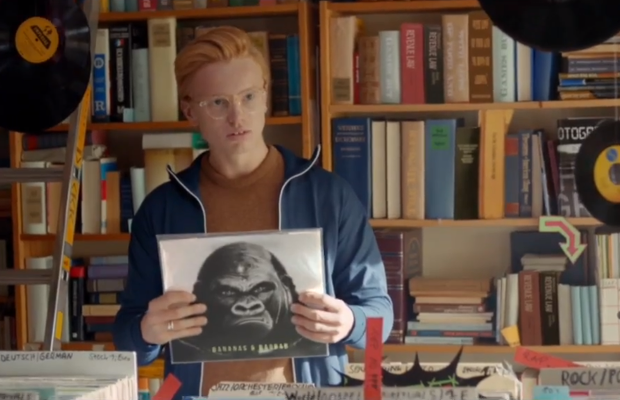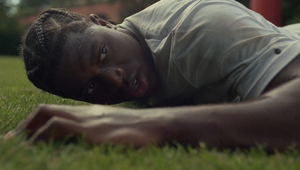
How AXE Moved Advertising Masculinity Beyond ‘Spray to Get Laid’

After AXE launched its ‘Find Your Magic’ ad in January 2016, the way advertising represents men was never the same again. The first campaign for the male fragrance and grooming campaign from 72andSunny after it won the account was a huge step change for the brand, celebrating a diversity of masculinities rather than idolising a variety of it that in the ensuing years culture has grown to find ever more distasteful.
The brand-agency combo has since launched the more all-encompassing #isitokforguys campaign addressing male insecurities, championed the power of confidence in the face of awkwardness, celebrated the wonders of male goofiness in a branded music video, used ASMR to explore the idea of the perfectly groomed ‘manscape’ and paved the way for ‘bathsculinity’.
Keen to understand the strategic moment where all of this changed and interrogate the impact that the campaign has had on broader society to this day, LBB’s Alex Reeves spoke to 72andSunny’s executive strategy officer Stephanie Feeney.
LBB> AXE 'Find Your Magic' was a step change in advertising and how it intersects with gender conversations. Why? How? And what has it changed?
Stephanie> AXE was at an inflection point. In terms of the way men relate with women, culture had moved on, and the brand hadn’t. This was compounded by the fact that the male grooming category was seeing growth due to men in their 20s and early 30s, while the brand’s positioning firmly cemented it in a more (pre-)pubescent space. Ultimately business demanded that the brand change, and we pointed the brand towards a space that is ultimately more empowering for both men and women.
LBB> When 72andSunny won the AXE account in 2015, how was masculinity represented in advertising and culture more generally?
Stephanie> There was - and remains - a fairly narrow depiction of male excellence in advertising and mainstream culture. Most notable were the things men were not - emotional, nurturing, communicative. What culture deems feminine, men avoid. What it masculinises - too often aggression and dominance - men, especially young men, exaggerate. #metoo has since catapulted this onto the mainstream radar, but there is still a lot of work to do.
LBB> And where was AXE's interaction with that broader picture at the time?
Stephanie> AXE played in a very narrow space we called “spray to get laid” when we pitched for the business.
LBB> What was the very first thought that led to 'Find Your Magic' and all the followed?
Stephanie> We talked to women about what made men attractive, and were quite moved by what we heard. It was rarely the traditional, even physical, things you’d expect, and more often what made a guy unique. His patchy beard, or love of bird-watching, or so-bad-they’re-good dance moves.
LBB> That’s so sweet! And then how did that morph to become the final campaign?
Stephanie> We made three key shifts. In terms of the guy, we moved from celebrating masculinity to celebrating individuality. In terms of the guy’s relationship with the girl (or guy), we moved from a narrative of conquest to one of connection. And in terms of the product, we moved away from saying, “It’s in the can”, and instead said “It’s in you”. AXE grooming products just help you bring out your best.
LBB> Obviously that formed the blueprint that you’ve followed for four years. In hindsight, what was it that made sure it resonated?
Stephanie> Keeping the AXE tone of voice! Irreverent and sensual. One of creative directors is always reminding us that guys want a laugh, not a lecture.
LBB> It certainly feels like it changed the course of masculine representation in advertising. Do you have any evidence to back that up?
Stephanie> It’s not something we track directly. We focus on how the work shifts the brand and the business. And hope to play our part in the broader conversation. So very happy that it feels that way.
LBB> What do you think have been the key moments in culture around this issue since?
Stephanie> In our own world, there was Gillette’s campaign and change of brand positioning to ‘The Best a Man Can Be’. In the wider world, #metoo continued, sparking many more conversations. In the UK we had Spurs player Danny Rose opening up about mental health issues – unbelievably a first for a current premier league player. In the US musicians Kanye West and Kid Cudi also talked about mental health issues while the great Serena Williams started a conversation around double standards for male and women athletes and “allowed behaviours”. Billie Eilish is starring in a brand campaign for menswear label MCM... I mean, that in itself isn’t probably a ‘key moment’ but it’s indicative of things shifting in the right direction.
- #metoo
- Gilette 'The Best a Man Can Be' - which divided opinion!
- Danny Rose, first active pro football player opening up about mental health issues. Or other famous artists like Kanye West and Kid Cudi fighting against mental illness.
- Aziz Anzari - Started a discussion around consent.
- Serena Williams - Started a conversation around double standards surrounding male / female sport stars and “allowed behaviours”.
- Not a key moment but you see a lot of genderless releases in fashion: E.g. Billie Eilish for MCM
LBB> What are the issues with masculinity that brands need to engage with in 2019? How do they differ from back when this journey began in 2015?
Stephanie> For brands already starting to engage with issues around masculinity, two thoughts:
We need to keep diversifying the narrative around what it means to be a man. It’s about presenting ideas and a way forward for guys who currently might be a bit lost.
We need to do as we say. If you’re not willing to put your business and products behind a more progressive masculinity, you shouldn’t be talking about it.
And for brands not engaging with these issues, open up! Be brave! Or get left behind.













